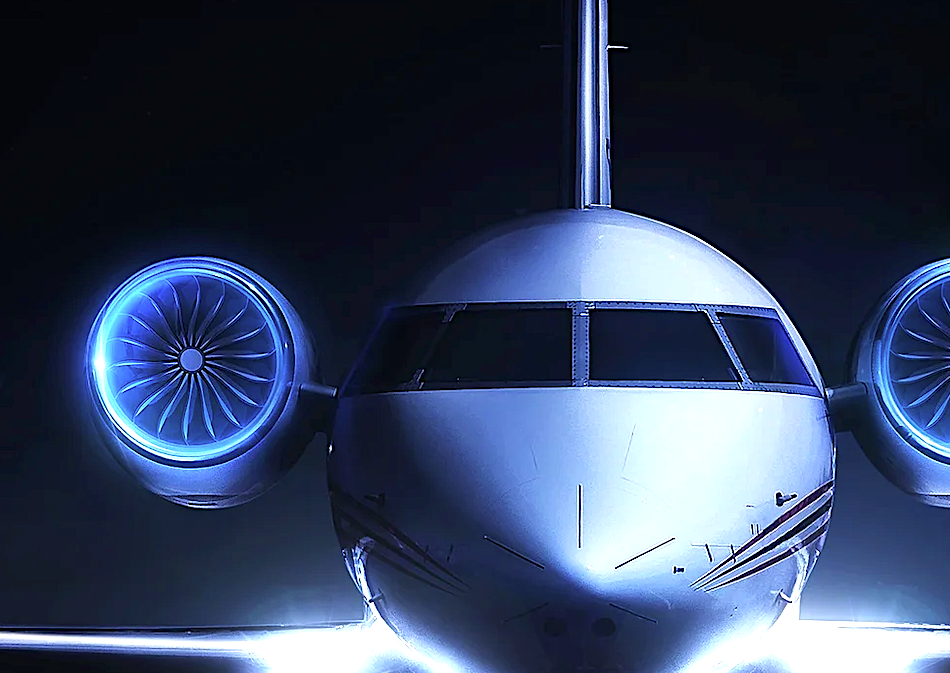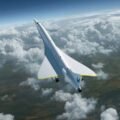The aviation industry could be on the cusp of a revolution, following recent tests of a new purely electric jet engine that packs the same punch as its traditional fossil fuel-burning cousins.
Canadian-based company Duxion Motors recently celebrated a significant milestone with the successful ground test of its eJet Motor – the world’s first rim-driven jet propulsion motor.
The eJet motor, an electric jet engine, represents a significant leap in electric aviation, utilizing permanent magnet technology to deliver unprecedented power-to-weight ratios within a compact design. Duxion’s approach could revolutionize the industry, offering scalable efficiency suited to larger aircraft, hybrid cooling for enhanced power density and reliability, and a flexible design that can be tailored to various airframes.
However, the path to electrification has its challenges. The aviation sector, much like its automotive counterpart, is grappling with the intrinsic difficulties of battery-powered engines, where the weight of the batteries often undermines the lift required for flight. The answer lies in efficiency – the amount of thrust produced per watt of power. This has spurred companies like Wright and H3x to innovate, developing lighter, more reliable electric engines that can power large-scale electric passenger planes with unprecedented efficiency.
Wright Electric’s 2-megawatt engine, capable of delivering 2,700 horsepower, illustrates the potential of electric propulsion. It’s a motor born of a comprehensive redesign, utilizing high-voltage and advanced thermal strategies to achieve the power and efficiency levels necessary for large aircraft flight. Wright’s vision extends beyond retrofitting existing airframes; they are collaborating with established manufacturers to build a hybrid electric aircraft that combines efficient propulsion with the range of liquid fuel engines.
The concept of Rim-Driven Fan (RDF) technology, though not new, has found a fresh application in aviation, with companies like RogersEV shedding light on its potential. RDF differs fundamentally from conventional Electric Ducted Fans (EDF) by attaching the blades directly to the rim, creating a complete rotor, and relocating the electro-mechanical elements to the periphery. The result is a system that promises enhanced efficiency, noise reduction, and operational simplicity.
Aerodynamically, the ducting of RDFs provides a boost in thrust, while the motor’s rim distribution enhances torque and cooling efficiency. The lower RPMs and high solidity ratio blades lead to a quieter and more environmentally resilient system. The simplicity of the design also translates to reduced maintenance and certification demands, making RDFs highly scalable and versatile for various aerospace applications.
Duxion’s chairman and CEO, Rick Pilgrim, says that his company is now in the lead regarding the future of electric jet engines.
“The eJet Motor is novel, scalable, and can be configured to serve a broad base of airframes,” he told Skies Magazine two weeks ago. “It represents a giant leap toward a future of sustainable aviation.”
Duxion Motors says that its innovative eJet Motor not only paves the way for reduced upkeep expenses due to its hybrid flight dynamics and cooler operational temperatures but also boasts a design feature of dual-ended fan blades that ensure operations are exceptionally quiet.
Born in 2017, Duxion unveiled its groundbreaking eJet prototype in April 2020. By July the following year, the firm secured a patent for the eJet motor. In a significant move last September, Duxion entered into a strategic C$500 million agreement with Dymond Aerospace, committing to equip Dymond’s forthcoming fleet of 100 uncrewed cargo planes with 200 eJet motors.
The eJet motors are expected to deliver over 8,000 pounds of thrust, paralleling the power of engines used in the 50-seat CRJ100 regional jets.
Reflecting on the landmark ground test of the eJet Motor, Pilgrim expressed a sentiment of vindication, attributing the success to years of meticulous research, the high caliber of the motor’s design, and the Duxion team’s combined expertise and unwavering dedication.
“This marks merely the onset of our journey,” he said.
MJ Banias is a journalist and podcaster who covers security and technology. He is the host of The Debrief Weekly Report and Cloak & Dagger | An OSINT Podcast. You can email MJ at mj@thedebrief.org or follow him on Twitter @mjbanias.

